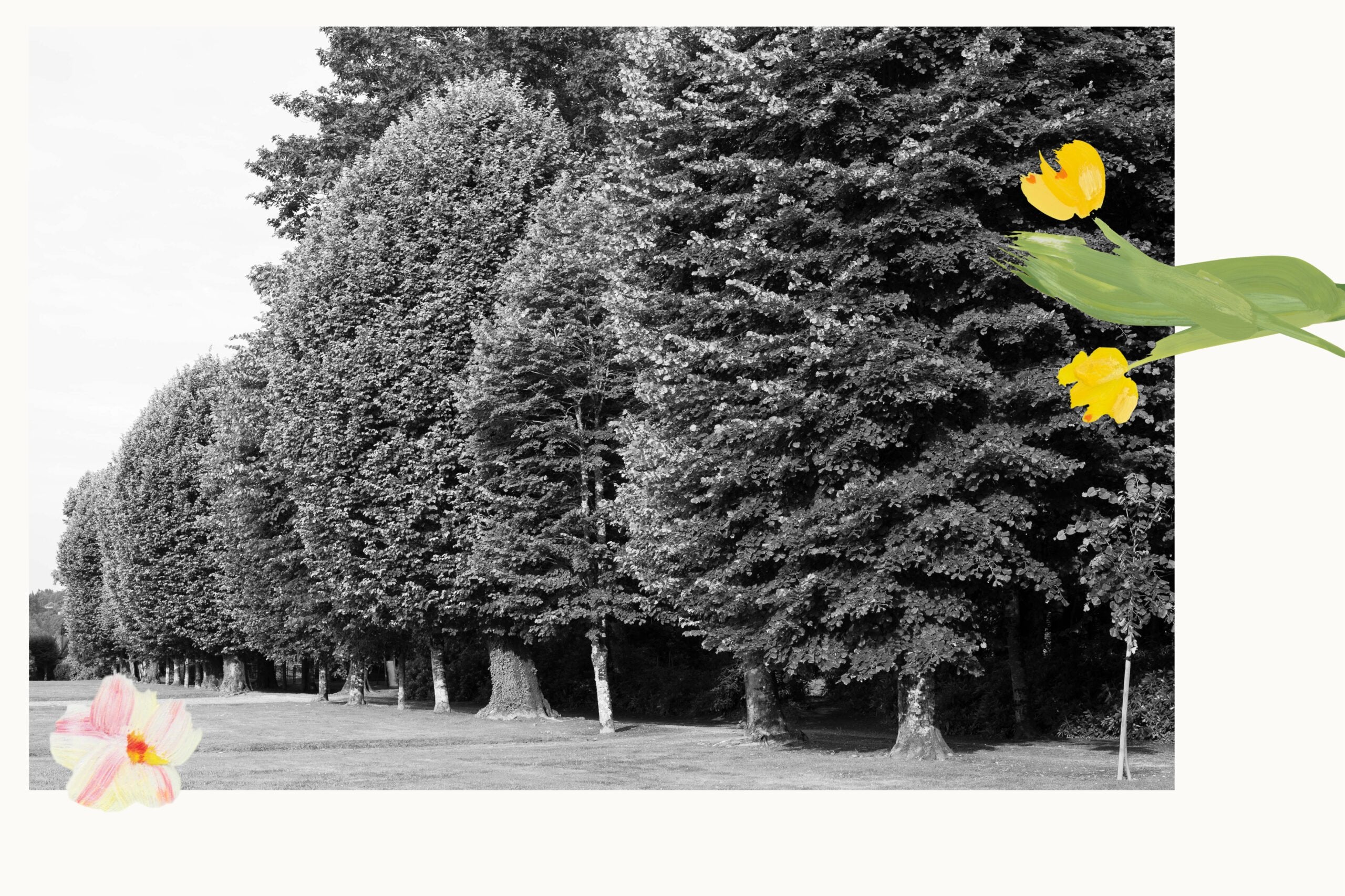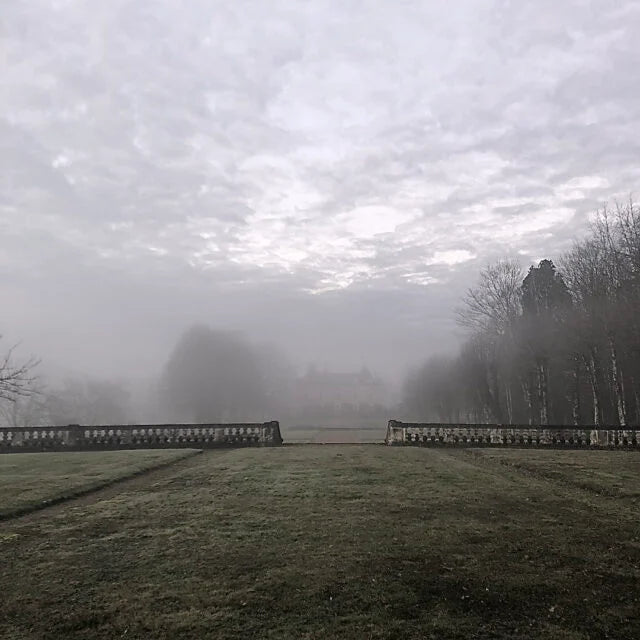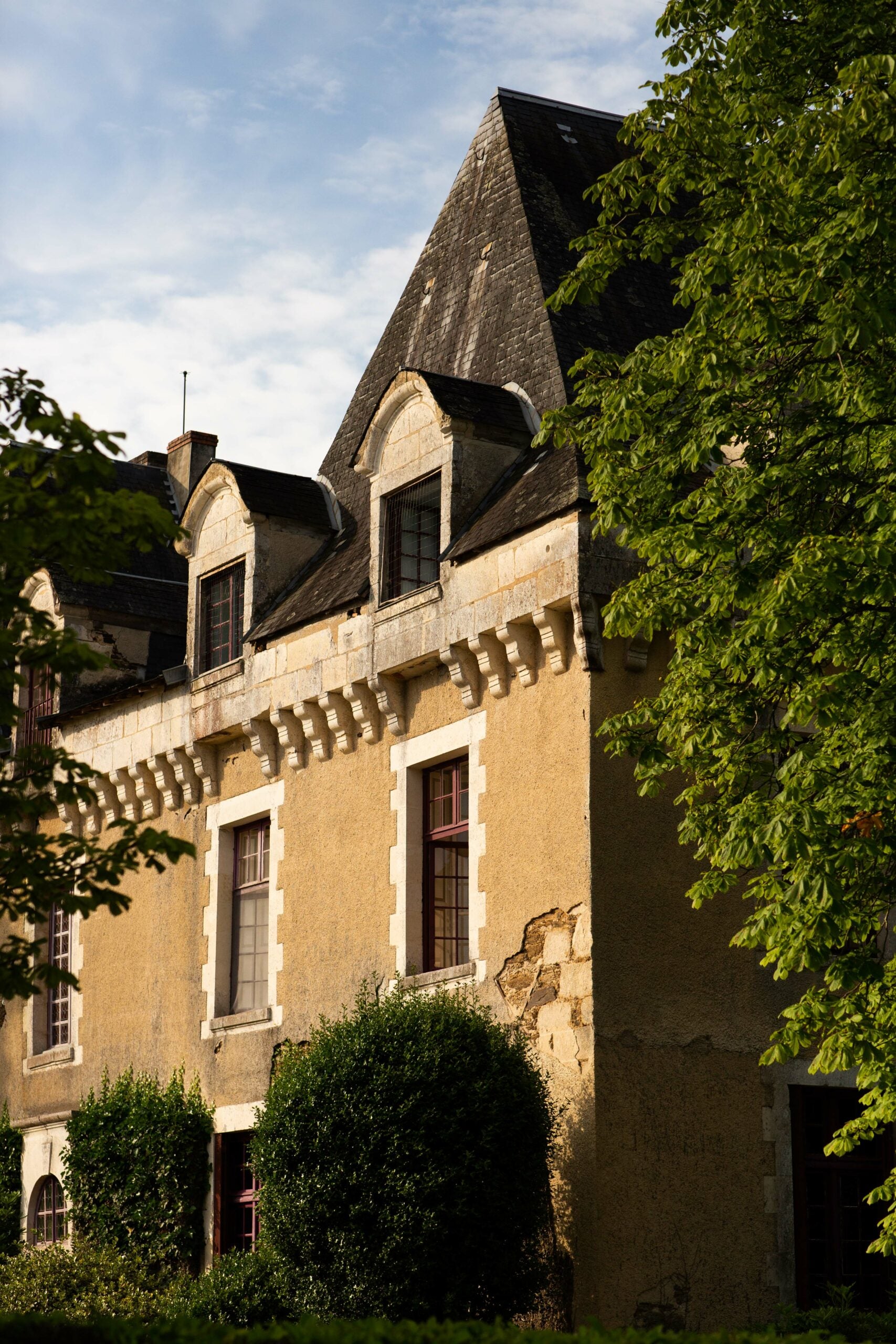
The fabulous history of the linden tree
It’s a tree. But not just any tree. It is the linden tree, a sacred and universal tree.
Revered since ancient times, used for centuries, loved throughout the world, the linden tree is par excellence the tree of abundance, the most beneficent tree in existence. This universality is no accident. This tree that wishes us well has lived with mankind since time immemorial, and its history is as rich and abundant as its virtues. Its benefits spread like no other on the mind, body and skin, and its fragrance is a real feast for the senses. So much so that mythology and literature have taken hold of this soothing colossus with exceptional longevity.
The linden tree, the universal tree
History, religion and culture are full of examples of trees as symbols of strength and balance. Today, forest therapy celebrates their ability to relax and reconnect people.
But no tree can match the linden tree which provides so many benefits that it is called in turn the “doctor tree”, the tree of love, the feminine tree or the tree of light….

The linden tree, the tree of justice
The Celts and the Germans claimed that truth emerged under the shade of a linden tree. Its fragrance favored the clemency of the judges and the conciliation of the parties involved. In the Eastern countries, it was more recently called the tree of justice.

The linden tree, the medical tree
In the center of villages, since the Gauls, there was always a linden tree. They were even built around the tree, because the druids used its leaves to fight fever and colds, to promote sleep and serenity. Later, weddings were held under the village linden tree, “the may”, where the spring festival was also celebrated.
In the Middle Ages, linden trees were planted near hospitals, because they made the air healthier and calmer, then along the roads by order of the king, their harvest being intended for the hospices. The tree was considered so protective and beneficial that it was even customary in the countryside to carry a small pouch filled with linden bark. It protected against diseases and injuries. It was also installed in the stables to protect the animals.
The doctor of Louis XIV used it to reduce swelling and oedemas.
In times of food shortage such as during the Second World War, dried linden leaves were ground into flour because of its exceptional nutritional properties, very rich in protein.
The tree of freedom
During the French Revolution, more than 60,000 linden trees were planted in all the districts of France, and it was consecrated “the tree of liberty” ! The Bicentennial of the Revolution was celebrated by replanting linden trees in 10,000 districts!

The ornamental tree
Conquered by its elegant charm and the aroma of its flowers, 16th century botanists planted it in parks and alleys. In the 18th century, it became the favored tree of French gardens, where symmetry and architecture were the order of the day. The linden tree formed alleys and delicate cloisters of greenery…
A tree celebrated in myth and literature
The linden tree is so virtuous and universal that it has been the subject of many myths and legends, and has been celebrated in literature over the years. It is notably the origin of the power of reminiscence of the famous “madeleine de Proust” !
This one was soaked in an infusion of linden blossoms…
Faithful love
Ovid and Jean de la Fontaine wrote about the myth of faithful love, the one of Philemon and Baucis. The gods had offered to grant their wishes: to spend their whole lives honoring them and to die at the same time.
“Baucis becomes a linden tree, Philemon becomes an oak tree.
If only the spouses would stay under their shade,
They love each other to the end, in spite of the effort of years.“
Marcel’s madeleine

The lime tree is such a virtuous and universal tree that it has been the subject of many myths and legends, and has been celebrated in literature over time. This is notably the origin of the power of the reminiscence of Proust's famous madeleine . This was soaked in a lime blossom infusion.
Faithful love
Ovide and Jean de la Fontaine wrote about the myth of faithful love , that of Philemon and Baucis. The gods had offered to grant them their wishes to spend their entire lives honoring them and dying at the same time.
“Baucis becomes lime tree, Philemon becomes oak.
As long as spouses stay under their shadow,
They love each other to the end, despite the effort of the years. »
Marcel's madeleine
Proust's madeleine is nothing without linden! It is so famous that it is part of everyday language. But who knows that this famous madeleine, at the origin of the most beautiful pages of French literature, has this evocative power because it was dipped in a cup of linden offered by Marcel Proust to his aunt Léonie to appease her?
“And suddenly the memory appeared to me . This taste was that of the little piece of madeleine that on Sunday mornings in Combray (…) when I went (…) to her room, my aunt Léonie offered me after having dipped it in her tea or linden blossom infusion. “It was I who was responsible for dropping the quantity of lime from the pharmacy bag (…) which then had to be put into the boiling water. (…) Soon my aunt was able to dip a small madeleine in the boiling infusion (…) of which she handed me a piece when it was sufficiently softened.”

Rimbaud’s walk
“One is not serious when one is 17 years old. One beautiful evening, no more bocks and lemonade, no more noisy cafés with bright chandeliers! We go under the green linden trees of the promenade…”.
Colette’s ode to the lime tree
“My god, to breathe the linden tree when it is a volcano of bees, a bush of russet flowers, the rival of the orange tree, the insidious lover, the pollen in golden rain, isn’t it enough? and boiled, it is still his responsibility to cure our fevers!”
The linden tree, the tree that wishes us well
In all traditions, the linden tree remains the tree that wishes us well.
It is one of the medicinal plants sold freely in France. Its flowers as well as its leaves and sapwood have virtuous activities, as well as its buds, major in gemmotherapy. Everything in it is good, even its perfume, registered in the collective memory so much it is exquisite…
So it was he who guided our entire approach to skin care with cosmetics, to body care with dietary supplements and finally to the sprit with the soothing benefits of its fragrance.

It heals the body
Linden was already used in ancient times as a calming agent to fight against spasms. Today, it is the molecule of a famous anti-spasmodic drug…
It is also a diuretic, a detoxifier that promotes the elimination of toxins by the liver and kidneys, and a remedy to lower fever, reduce blood pressure, fight against rheumatism …
The linden tree is a nourishing tree, good for the body and taste.
It is edible, its leaves and flowers rich in vitamin C are eaten in salads. As for its honey … ! The linden tree is an extremely melliferous tree, and at the time of the bloom, all the tree buzzes so much the bees are numerous. Its perfumed honey, very precious because the flowering is very short, is a recognized softener.

It soothes the mind
Since time immemorial, its flowers have been used for their tranquilizing, sedative and hypnotic virtues against insomnia. Linden pacifies the psyche, reduces stress and anxiety and promotes sleep.
Through gemmotherapy (the science of buds), we harness the power of linden buds in our dietary supplement, L’Élixir de Sérénité. This little mouth spray, in nomadic format, soothes anxieties and moments of stress in just a few “pshitts!
The infusion of linden blossoms is sovereign to soothe. Nothing is better in the evening, in case of nervousness, a tea of linden flowers or the delicious relaxation in a linden bath. Its use is even recommended by pediatricians!
Linden blossoms are anxiolytic, they are reputed to attract joy and keep melancholy away. The linden tree is also called “the tree of joy” !
As for its honeyed white flower fragrance, with subtle, delicate and spring-like notes, it also contributes to relaxation and joy. This has been confirmed by neuroscientific analyses conducted to measure the emotional impact of TiL’s fragrance, the wonderful Eau qui Enlace, composed by the talented perfumer Francis Kurkdjian
It beautifies the skin
Pliny the Elder already mentioned 2000 years ago “the happy effects of linden bark vinegar on the vices of the skin”. The leaves have been used for a very long time as a poultice on wounds and burns.
Since then, “grandmother’s recipes” have flourished in every sense of the word. They concocted lotions based on linden blossoms reputed to soften the skin, soothe sensitive epidermis and scalps, and all skin disorders. But also to reduce wrinkles, lighten the complexion, soften the hair… This is what triggered TiL’s desire to understand and verify the potential cosmetic actions of our family linden trees. Their different parts, buds, leaves, flowers and branches were analyzed. This confirmed a very high presence of anti-oxidant, soothing and moisturizing molecules. When science proves the effectiveness of tradition!
That’s how our cosmetics range was born, combining cleanser and make-up remover (La Gelée à Fleur de Peau), moisturizing and smoothing day cream (La Crème de Beauté), regenerating anti-aging night cream (Le Baume qui Ressource), beautifying nourishing dry oil (L’Huile qui Enchante), as well as body essentials such as cleansing gel, body lotion and soap…
Linden tree, the gentle force
What is extraordinary about the linden tree is that it has been close to man since the beginning of time. It lives with man, accompanies him in his activities, cares for him, calms him down, embalms him.
The linden tree, man’s best companion
Since prehistoric times, it has been the “string tree”, because it was the first plant from which we knew how to extract the fibers from its bark, the liber. This was long before hemp or linen. They were used to weave and make the ropes that men needed for their constructions, because they are very strong. The lindfen tree is thus “the tree that weaves ties”, in every sense of the word.
Its wood was then used for sculpture, painting, and even witches’ wands. Its leaves and flowers have always been used for nourishment, healing, calming and perfume.
The particularity of the linden tree is its conviviality. It is everyone’s neighbor tree, reassuring and comforting, the tree of social bonds.
It watches over people and can be found in village squares, in schoolyards, in front of houses in the countryside, because its generous and fragrant shade shelters large tables and summer siestas.
Like man, the linden tree lives to the rhythm of the seasons:
- In winter, in a state of dormancy, it prepares its buds in which leaves and flowers are already in full bloom
- In spring, it is the season of love, its flowers are pollinated by bees
- In summer, it bears fruit and babies
- In autumn, it lays down its babies, the fruits fall

The Tilia Tomentosa : the silver linden tree, a very fragrant specie
There are many species of linden trees throughout the world (46), the most important being Tilia Cordata or small-leafed linden, Tilia Platyphyllos or large-leafed linden, and Tilia Tomentosa or silver linden, with its silvery leaves.
It is the one of the TiL estate, which was chosen by our elders about 150 years ago, because it is particularly majestic in a French-style park, and its blooming, at the end of June and beginning of July, is incredibly fragrant.
It signals the start of the wonderful summer evenings, but especially the beginning of the hand harvesting of the leaves and flowers. And it was this moment that inspired the renown perfumer Francis Kurkdjian to compose L’Eau qui Enlace.

The intoxicating harvest of flowers
The picking is very long and meticulous because the flowers are tiny, but deliciously perfumed to the point that in the evening the pickers and us are intoxicated and in a state of relaxation never reached the rest of the year!
The choice of harvesting time is very important because linden trees bloom for about 10 days, once a year and not necessarily all at the same rate; it is necessary to pick when the flowers are neither too closed nor too open, and this requires daily monitoring by a trained eye. The leaves are picked at the same time.
The twigs and buds are harvested at the end of March, beginning of April, and the picking of the buds requires the same attention to choose the right moment, which is never the same from one year to another. It is always Nature that decides, and we adapt….
A resilient dean
The linden tree can live for 1000 years, and grow up to 40 meters high.
Incredibly resistant, it is the veteran of European trees, well ahead of the oak, and its longevity is a formidable link between generations.
Its capacity of regeneration is such that it can remake a head that the wind would have carried away.
We experience this every day at TiL, where among the hundred or so very old linden trees, some have been badly damaged by storms. But they heal and close their wounds, forming “covering beads” (scars). And they start again, always as radiant and prodigious. Their capacity for resilience in the face of various setbacks is spectacular and moving.
To accompany them and ensure their succession, we have replanted about 30 silver lindens this year, and plan to plant them every year.
The poetry of the linden tree
In our domain, near the linden trees, we can find a chair in the quiet.
It is our grandfather’s chair. He loved to watch his linden trees grow. He often told us:
“Watch the linden trees grow, at their own pace”.
This is what inspired us to write a few words of tribute to our trees…
“I am not in a hurry.
Neither slow nor fast.
I go at my own pace because it’s a good pace.
I am on time every season.
Never late, always on time.
Always joyful.
I am the sacred tree.
The majestic tree that inspires well-being.
I release stress, I soothe the mood.
I am the linden tree.
Anchored in the ground, looking up to the sky,
I am power and calm.
Strength and serenity.
Vigor and harmony.
I am the balance of the elements.
I am a linden tree, a tree without equal.
A benefactor tree.
A protective tree.
I am good for everyone.
I know how to calm and soothe the spirit.
I know how to awaken the spirit of youth as well as regenerate the youth of the body.
I know how to reactivate beauty and well-being.
My shade in the middle of summer is a haven.
My branches shelter a buzz of life.
My flowers soothe stress, my buds rejuvenate the skin.
My sap revitalizes the cells.
I am a fabulous elixir.”


